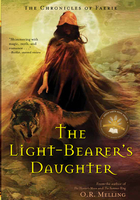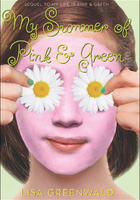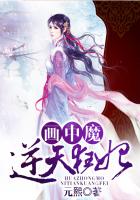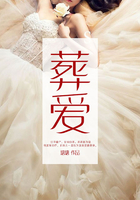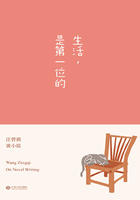"GIRLS ON FILM"
When MTV reluctantly opened the door to British and European acts, the ones that came stumbling through were by and large an odd lot. Some seemed provincial, others awkward; a few were just plain carnival acts (not to speak ill of the dead, but Falco). Duran Duran were none of these things. They were the MTV generation's Rolling Stones. This wasn't a band evolving away from its grubby, indie beginnings—Duran were born to be big. The so-called Fab Five (singer Simon Le Bon, keyboardist Nick Rhodes, bassist John Taylor, and two other unrelated Taylors, drummer Roger and guitarist Andy) broke out of Birmingham, England, then promptly conquered the world. They saw it as their duty to live out the lifestyle they depicted in their wildly overproduced videos. The supermodels they squired, the luxury yachts and private jets, the rock-god decadence and debauchery—they bathed in it, and yet we didn't hate them for it. No band so synonymous with the overindulgent eighties transcended the decade better. They survived the vagaries of fashion, lineup changes, the passing of the years, and the profitable lure of the package-tour nostalgia circuit to become the era's distinguished elder statesmen. And their hair still looks immaculate.
LM: Duran Duran chose me—I had no choice in the matter. I still remember, clear as day, the first time I saw the "Hungry Like the Wolf" video. It was like I was being possessed. From then on, everything was different: Everything I thought and felt was in the name of Duran Duran. I traveled to their concerts and waited outside their hotels and recording studios. I ran an internationally known Duranzine before pursuing a career in entertainment journalism just so I could be paid to be near them. I married a man named Simon, only to divorce him for an even hotter guy named John. I have lived for them, lied for them, and questioned my own sanity over them. And I'd do it all again. Don't say a prayer for me now—save it 'til the morning after!
JB: My Five Stages Of Duran Duran:
1. Denial. "Haven't heard them. Not going to waste my time. They'll be gone in five minutes. I don't like their puffy shirts."
2. Anger. "This is shit. It's shit! Why are people so hysterical about them? They're a one-hit, all right, two-hit wonder—at best. In a few years, you're all going to be embarrassed about liking them."
3. Bargaining. "Let me never have to hear their songs or see their videos again, and I swear I'll be a better, less selfish, more thoughtful, and caring person."
4. Depression. "Maybe it's me. Maybe I'm wrong about everything and everyone else is right. Is that possible?"
5. Acceptance. "Fine. They wrote a few good songs. They had staying power. They turned out to be way more consistent than groups I liked a lot better at the time. I have grudging respect for them. Okay?"
JOHN TAYLOR: We were perfect, and very few bands come out of the bag perfectly formed. Whether you liked us or not, that was a question of taste, but we were fully developed. And the moment Simon stepped in, we became the band that made "Girls on Film." The serious press had such a hard time with Duran in the beginning, and one of the reasons is because there was nothing for them to do. A lot of other bands—and I hesitate to say Radiohead, U2, or even the Rolling Stones—it took them three albums to find their thing, and along the way, their journalist friends had become their champions. The press fueled a part of their story, so they could own them. With Duran, they were like, What are we going to do?
NICK RHODES: "Girls on Film" originated in 1979 in Birmingham. We had a rehearsal room in a squat where Andy Wickett, our singer at the time, was living. We'd recently parted company with Stephen Duffy. Andy had this phrase "girls in films": "Girls in films look better." John and I decided to change it to "girls on film." It just sounded better. There is a reason why it's been used so often as a phrase since. If you could hit on one of those every day, you would.
TAYLOR: After Andy Wickett left, we said to the next singer [Jeff Thomas], "We've got this chorus, write the verse as you see fit," and he wrote his own. Then we fell out with Jeff. The thing about "Girls on Film" is Nick and I trusted our instincts. We could have cast it away when we fell out with Andy, but Nick and I held on to it. With Simon, again we said, "We've got this chorus—write whatever you want for the verse." And his opening line was absolutely fantastic: "See them walking hand in hand across the bridge at midnight." There are so many little hooks—every line of the verse is a hook, you know? I know, because we play it every night, and I'm singing along, "Lipstick cherry all over the lens as she's falling." It's one long hook, which it needs to be, because the chorus is so simple. Simon had never even listened to the previous singers' versions. I guess that's testament to the crazy, evocative simplicity of the phrase "girls on film." It's actually mind-racing. It's that suburban view upwards to the catwalk, to the silver screen—to unattainable beauty on that level—that the suburbanite always dreams of.
RHODES: Girls have always been a thing, thankfully, for our species. Simon really did write the master lyric, which was much funnier, more clever, and more ironic than it had been previously. It was about girls in films; it was about exploitation. It was about the old Hollywood clichés of the casting couch but the excitement and the glamour of it, too.
SIMON LE BON: I wanted something that was a bit edgy, because I wanted the band to be edgy—not too soft. So an homage to girls in the movies was not what I was after. I wrote the song as a fantasy. It's a guy watching these models, and they're being exploited for the camera, for the producer, and for the guy who's at home watching them on telly while he's sitting in the bath. He feels that he's got his own special relationship with them, and he realizes that the girls can take him all the way. At the end of the third verse, when it goes, "Give me shudders in a whisper take me up till I'm shooting a star"—that, to me, was an orgasm. That is the guy actually coming, and whenever I sing it, I think about that. And the line "There's a camera rolling on her back, on her back"? He's repeating that line as sexual innuendo—because "on her back" definitely means she's having sex, right? But the song is also about the fact that women have to go through so much to make good photographs. And they're selling a product. "Wider baby smiling, you just made a million"—not a million for her, a million for the guy who's making it! So I wanted the song to be fun but have some substance as well.
RHODES: Simon's got a way of finding words that sound beautiful together. But the songs have always had a meaning—even the more abstract songs like "Union of the Snake" or "The Reflex." That period we certainly got more abstract than the first couple of albums, but they always had a story behind them. I'm all for surrealism in lyrics, but at the same time, if you can find something that truly touches somebody emotionally, that's when you're on the track to writing a good lyric, which often leads to a good song.
When Simon first came to meet us, he had this fabulous little notepad with the words "Rov Ostrov" [the name of his previous band] written on the front. That book, those lyrics, the name Simon Le Bon—we were thinking, If only he can sing, it'll be perfect! Everything from the first album was written in that book, and probably the Rio album too. How he never lost it, I don't know. We ought to make a facsimile.
TAYLOR: We were incredibly single-minded: We just wanted to be the best that we could be. I was there to craft the very best bass lines, Simon to craft the very best lyrics. The best bands are the ones where the members hold down their own corners. It's like, you take care of your shit, I'll take care of mine. You can't have any slackers.
LE BON: I spent a whole day and a half trying to come up with a new melody because our managers didn't think it was good enough. Finally I said, "That is the melody, guys." And John, Nick, Roger, and Andy backed me up. Because they understood—we were very natural musicians. We had an instinctive feel for what worked and what didn't. They trusted me and my instincts that much to say, "If he says it's right, it's right."
TAYLOR: It took us a long time to get "Girls on Film" right. We were learning to play at that time. There's a CD box set that has the Air Studios demo, on which we hadn't quite refined it yet. If you listen to what Roger and I are doing on that compared to the version that made the first album, we're playing much more cleverly on the album version. There's more playing—we'd really found our thing. If I had to encapsulate the best of the first few years of the band, I'd take three tracks: "Rio," "The Chauffeur," and the "Girls on Film" 12-inch.
RHODES: The camera clicking at the beginning was something I wanted to add. It was a 35mm Nikon that was put on motor drive. It was something that identified the song immediately. I've always felt that intros are incredibly important. Some of our songs have pretty elaborate intros, like "A View to a Kill" and "Wild Boys." I'm always taken by the thing that catches my ear that I haven't heard before, and that's what "Girls on Film" has—between the camera, that very distinctive drum beat, and one of John's greatest bass lines.
TAYLOR: I had been listening to a lot of Bowie's band of that period: Station to Station and Low. Side one of Low, which is the "Sound and Vision" side, was Roger's and my fantasy. If you listen to "Stay" off Station to Station, that would give you an idea of what Roger and I were trying to emulate—the tightness of that rhythm section. Everybody says, "Bowie and Eno, the genius of their ideas!" But underneath you have George Murray and Dennis Davis, the greatest rhythm section of that time. You have Stevie Wonder's rhythm section basically slumming it, but everything that Murray and Davis did was incredibly funky. Chic was the other really important one. Chic turned me on to bass.
LE BON: I was brought up on T. Rex and Bowie, and moved on into Lou Reed, a little bit of Genesis on the way, and I was most definitely deep into punk. Look at the Damned—there's great poetry in some of those lyrics. Leonard Cohen, who is a poet—I was into his lyrics very much. I was a big fan of the Doors and Jim Morrison's lyrics. Then there was the humor of the Kinks. And Patti Smith must be mentioned. She was probably, at that time, the single most influential person upon my lyric writing. Now, you might not see any of Patti Smith in my lyrics, but I do. Actually, Patti could almost have written "Girls on Film," because she had that thing about money and sex and youthfulness, and also that whole sexual climax thing. That's straight out of Patti Smith, that is. If you listen to "Birdland" and "Horses," that sexual dynamic curve to climax is definitely there.
MIXTAPE: 5 More Sexy Songs About Sex 1. "Into You Like a Train," Psychedelic Furs 2. "Total Control," The Motels 3. "Kiss Me," Tin Tin 4. "So Alive," Love and Rockets 5. "Master and Servant," Depeche Mode
TAYLOR: We knew "Girls on Film" was the strongest track on the album, and we fought with EMI. We said, "This has got to be the second single," and they were like, "No, no, no: 'Careless Memories' is the right second single." I look back now, and I feel like the guy who was doing that, Rob Warr—he used to run Fast Product with Bob Last, who had the Human League before—I was thinking he was trying to sabotage us. So we released "Careless Memories," and that was the last song we'd put out in a long time that wasn't a Top 30 hit. We forced their hand and put out "Girls on Film" when the album came out.
Then we did that six-minute-long video. The subject matter! Do you know how many guys have come up to me and are like, "I love that video!" I had somebody tell me recently, "In the early eighties, I was a thief. Me and my mate, we used to break into chemists' shops, rip off all the pills, and go back to his flat with these piles of speed and just watch the 'Girls on Film' video over and over and over."
There were not a lot of people doing videos, and we saw that opportunity in the rock clubs in America. We were in Memphis a week or so ago, and the guy who was driving me said, "We used to go to this club called Antenna, and they had this big video screen above the dance floor, and they would show your videos." It was that little window before MTV. There was the Rock America circuit of dance clubs, of which the Ritz in New York was like the flagship. You could fit, like, 1,500, 1,600 people in there. There was a screen above the dance floor, and around the end of the seventies, beginning of the eighties, they started playing music videos. The "Girls on Film" video was laser-guided to reach that audience dancing at one o'clock on a Saturday morning at the Ritz.
Our managers drove the video agenda. We were like, "Oh, man, a video?" They were like, "Chaps, this is something we need to do." The people who were getting MTV going had a meeting with [Duran managers] Paul and Michael Berrow, and they said, "We need content." If there had been videos for "More Than a Feeling" and Journey, for all the music that was on the radio at that point, that's what they would have played. But there wasn't, so they were forced to look to the edge, which was all coming out of London. They had to play the Buggles, Ultravox, Peter Gabriel, Duran Duran, because they were visual. They said to us, "What we really want is something like a James Bond video." That's what put the seed into Paul's mind that we should go to Sri Lanka [to shoot videos for the Rio album].
The "Girls on Film" video—Jesus, we did that in one afternoon! Everything was shot on this T-shaped set. There was a catwalk, with the band on a stage at the end and the boxing ring at the other. It was conceived with a combination, I would say, of jocularity and foresight. But I didn't like that day. It was what I imagine it must be like to be on the set of a porno movie. It was exciting, on the one hand, having all these beautiful girls walking around without clothes on. But the band, we're tripping out, showing off, and not being ourselves. It wasn't comfortable for us.
"The 'Girls on Film' video… was conceived with a combination, I would say, of jocularity and foresight…. It was what I imagine it must be like to be on the set of a porno movie."
RHODES: We wanted to make a sexy video, but we wanted it to be funny as well. It's so ridiculous, the things that are in the video—the mud wrestling, the lifeguard, the [kiddie] pool. Some people may think it's politically incorrect, but it wasn't meant to upset anyone. It was made to make people smile, and there's still something about that that really works.
LE BON: What do I remember most about that day? The one with the dark hair. Some guys like blondes, some guys like dark-haired girls, and I realized absolutely which one I liked and was going for. It was very sexy, and then, watching it back, there was some turn-off as well as turn-on. Like, the sumo wrestler guy—I think that is universally the great turn-off in that video.
RHODES: When it got banned, it didn't do us any harm. When you get something banned, it throws a different light on it—like when the Sex Pistols were banned from everything in the U.K. The video became infamous. Everybody wanted to see it because they couldn't. Eventually we made it available on a videocassette, and to promote it we did a signing in Times Square at a place called Video Shack, where there were riots and police horses. The irony is, a lot of the young girls coming in to buy the video technically weren't allowed to watch it.
TAYLOR: After "Girls on Film" and the Rio album, the success was so huge in the early eighties that when we lost that in the second half, we thought, Oh my God, is that it? It was pretty terrifying. After Andy and Roger left in 1986, we lost a huge part of our firepower, and we had to try to find ways to get the chemistry back.[1] It wasn't easy. We took such a bashing in our late 20s from the culture. There was this period where everybody said, "Okay, you're out. Get out!" That's when you need Nick Rhodes. He was like, "I'm not moving!" If it were up to me, I'd be in a hole in the ground somewhere.
RHODES: I don't like giving in. By the early nineties we still had a lot of music left in us, so I wouldn't have seen any reason to bow out. John bought into grunge a lot more than I did. The whole movement left me cold. It looked unattractive and, aside from Nirvana, it sounded like something I'd heard before but not as good.
There was no space for us in the media at that time. A lot of journalists would have very happily locked the door on the eighties and thrown away the key with Duran Duran in the vault. But I knew there would always be space for really good songs. By the time we got to making The Wedding Album [a.k.a. the band's second self-titled album, 1993's Duran Duran], I remember us sitting down and saying, "Okay, let's write songs just like we used to." So we really went back to basics and wrote "Ordinary World" and "Come Undone."
TAYLOR: That was the turnaround. But by the time The Wedding Album came out, I'd really slowed down as a bass player. I remember spending a lot of time in New York, becoming aware of all those session musicians and a little ashamed of my own playing style because I wasn't "the real thing." It almost made me want to go and hide away. Whereas what you hear on the first few Duran albums—the first two, three—is that I was unashamed. I was like, This is what I can do! Listen to me! One of the worst things is when you get self-conscious. It became about playing less and less until my playing practically disappeared. It took somebody I respected, Mark Ronson,[2] to say, "Look, nobody does that better than you. The way you played on 'Rio'—that's your thing, JT." I was like, "I don't know.… Can I still do that? We need to fit into the culture." But Mark said, "That's how you fit into the culture."
THAT WAS THEN
BUT THIS IS NOW
The original hit-making, multi-Taylor lineup reunited in 2003 to much fanfare. After shedding guitarist Andy Taylor for the second time, they collaborated with fans Timbaland and Justin Timberlake on 2007's Red Carpet Massacre, an album that fans hoped would reignite the classic Duran sound. That didn't happen, but they rebounded spectacularly with 2011's Mark Ronson–produced All You Need Is Now. They continue to age gracefully.
"It seems absurd to me that we are now in our fourth decade of Duran Duran."
TAYLOR: It was a really interesting time when we put the reunion together at the turn of the millennium. Not only were we trying to write songs; we were also trying to reinvent the sound of the band. Since Roger, Andy, Simon, Nick, and I had last played together on "A View to a Kill," we'd had hip-hop, the Chili Peppers, Guns N' Roses, trip-hop. Everybody was super self-conscious. Roger would be the first to admit it: He didn't want to be Roger Taylor when he came back—he wanted to be [Red Hot Chili Peppers drummer] Chad Smith. I'm like, "But you're Roger Taylor! I can't play with Chad Smith!"
Also, we'd had this dark sense of our early years, because the culture, at that point, had not come back around to Duran yet. Nobody was giving us any props in 2000. But then Gwen Stefani came on board and Justin Timberlake. MTV acknowledged us with a lifetime achievement award, and suddenly there was a turn of the tide. Suddenly the NME is saying "Hungry like the Wolf" is the most important song ever written.
But the thing is, by the time it changes, it doesn't matter. It's actually not really important to us anymore. All the things that I was desperate to attain I don't care about anymore. We're not desperately trying to seek anything from anybody. We're just doing our jobs as best as we can and trying to have a good time doing it.
LE BON: In the modeling world, ["Girls on Film"] has become Yasmin [Le Bon]'s song. No other catwalk girl could ever lay claim to it in the same way that she could. When we did the Fashion Rocks show in London [in 2003], we played the song, and she's one of the girls on the catwalk, and you can see the sense of ownership that she had. That made me very, very proud.
RHODES: It seems absurd to me that we are now in our fourth decade of Duran Duran. The other day I watched a video of us playing the song "Friends of Mine" dressed in military uniforms, and it was alien to me. I have a very good memory of almost all the things we've done—even small German TV shows—but this I didn't. I thought, Wow, they were an interesting band. Look at what they were doing then!
Notes
[1] NILE RODGERS, producer: The only time I ever made an album that took a long time was Duran Duran, Notorious. The group had broken up—Andy and Roger had left. I had to figure out a way to keep these guys together. I absolutely loved them like brothers, and I couldn't watch Duran Duran just fade away. It was the only time I ever spent a million dollars making a record—that was almost blasphemous to me. But what we got out of it was one of my favorite records of all time. With Notorious, I was able to shift the band from this cute boy-band sort of thing—and those [early albums] were great records, by the way. But I knew that, had they stayed in that area, their life span would be limited. I remember the NME review of [Notorious], and I never remember reviews. After working on that album and spending that amount of money and seeing how hated they were by the British press in those days, I was so proud. I actually have this memorized: It said, "Just when you thought it was time to count these jerks out, they not only make a record that's good but one that's worthy of respect." Duran Duran are, at their heart, really a band. They really are like the Rolling Stones or U2, guys who struggled to get better at what they did, and they struggled together. That's what makes a band, that sense of us against the world, and they have that.
[2] MARK RONSON, artist, producer, and DJ: John is quite modest as a musician. They got a lot of stick for being pretty boys—people forget they can really play. That amazing rhythm section being the backbone of "Girls on Film" is square one. Then to have that incredible guitar riff—there's nothing light about it. It's like a fucking Les Paul through a Marshall. It's as Steve Jones as anything, which is such a juxtaposition to the slinky groove. Then you have this incredible wall of synth and [lyrics] that are all about sex—that is the home run. It's not just about sex: The song is sex. Obviously, it wasn't premeditated like they're mixing it in a lab. It just magically came out. You just know when you put the record on—when that guitar and groove come in, it's just alchemy.

